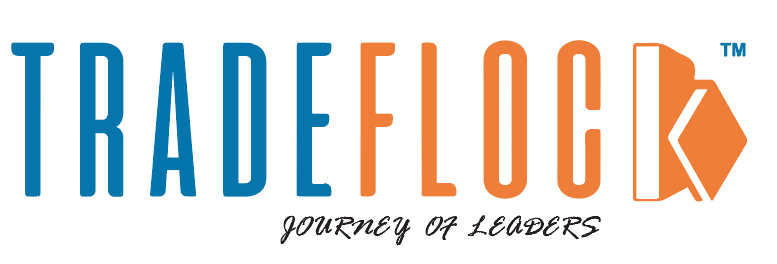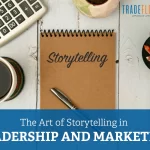Are you familiar with the B2B sales funnel stages? For those who aren’t, the B2B sales funnel is a model that illustrates the journey that a potential buyer takes towards making a purchase. Understanding the sales funnel stages is crucial for businesses that want to optimize their pipeline and maximize revenue.
According to research by Aberdeen Group, companies with a well-structured sales funnel achieve 18% more revenue growth than companies that don’t. ? This is because sales funnels make the sales process more predictable, more profitable, and more easily optimized.
Table of Contents
But why do B2B businesses need a sales funnel?
B2B buyers today are digital-savvy and complete more than half of the buying process before initiating dialogue with a sales rep. ? This means sellers need to change how they attract and engage B2B buyers today. Enter the B2B Sales Funnel. It breaks the sales process into well-defined stages to target prospects with the right content at the right time. ?
One by-product of building a sales funnel is that sales and marketing teams better understand their buyer. ?? Over time, as the funnel sees more and more leads pass through it, marketers and sellers can optimize the funnel to attract the buyers most likely to convert.
This helps improve B2B lead generation strategies and personalize outreach. Personalizing outreach can improve performance. Personalized emails have a 14% higher click-through rate than generic ones and convert at a solid 10% rate. ?
So, what are the stages in a B2B sales funnel?
The B2B Sales Funnel includes five stages:
- Awareness
- Interest
- Evaluation
- Engagement
- Purchase
Monitoring stats such as site traffic, social media activity, and email engagement during the awareness stage is essential. ?
Customers learn more about potential solutions to their problems in the interest stage. Sellers should have plenty of educational content ready for prospects to consume, such as blog posts, webinars, and product description pages.
In the consideration stage, prospects are considering the seller’s offer specifically. It’s up to the seller to prove their solution is ideal by building a relationship and earning credibility. Providing case studies, trust badges, product reviews, and testimonials can help the seller here.
Lastly, buyers determine which product they will choose in the decision stage. This is where sellers can seal the deal through demos, free trials, proposals, and negotiations.
According to a report by eMarketer, B2B eCommerce is projected to make up at least 12% of all B2B revenue next year. With such a significant portion of revenue at stake, businesses must ensure that their sales funnel is optimized to capture and convert leads effectively.
Different tactics and strategies must be employed at each stage to get potential buyers to move to the next stage. For instance, during the Awareness stage, potential buyers seek resources, education, and data to solve their problems. At this stage, providing high-level information and content can help generate their interest in your products and services.
While the classic B2B sales funnel is still the most widely used model, advancements in account-based marketing are changing the traditional role of the funnel. These changes are explored in more detail in the article.
As buyers move through the marketing funnel, their needs and preferences for communication mediums also evolve. Therefore, mapping out your marketing strategy and tactics is as important as mapping the buyer’s journey.
? According to a survey conducted by HubSpot, 63% of marketers say their top challenge is generating traffic and leads. By understanding the sales funnel stages, you can identify areas that need improvement and optimize your lead generation.
One way to do this is by employing various marketing tactics for the different funnel stages. For instance, in the Awareness and Interest stages, potential buyers may need to learn your business exists. SEO tactics, lead generation, and content marketing must be laser-focused on your persona. Using whitepapers, eBooks, instructional videos, and paid ad campaigns that address your buyer’s pain points can effectively draw attention to your business.
While marketing tactics are essential, businesses must also keep their B2B sales pipeline in mind. The sales pipeline focuses on the actions taken by salespeople during the sales process and the potential for revenue at any given time. To keep the B2B sales funnel full, businesses require marketing tactics, and for building a sales pipeline, best practices must be employed.
Why Understanding B2B eCommerce Sales Funnel Stages Matters
Now, let’s dig into the reasons why having a grasp of the B2B eCommerce sales funnel stages is a game-changer.
- Boost Conversion Rates: By understanding each stage, you can craft targeted marketing strategies to nurture potential customers and guide them from one stage to the next. This increases the chances of conversion and maximizes your ROI.
- Streamline Marketing Efforts: When you understand the sales funnel stages, you can allocate resources and efforts effectively. Tailor your marketing campaigns to address customers’ specific pain points and needs at each stage, maximizing their impact.
- Identify Gaps and Optimize: Tracking the progress of leads through each stage helps identify bottlenecks and areas for improvement. Analyze data, leverage analytics tools, and tweak your approaches to optimize the sales funnel and drive better results.
- Enhance Customer Experience: Each stage presents an opportunity to create a memorable customer experience. By understanding the needs and preferences of your customers at different stages, you can tailor your interactions, deliver personalized experiences, and build long-term customer relationships.
Measuring and Analyzing Your Sales Funnel
To optimize your sales funnel, you must measure and analyze its performance. ?
Track essential metrics such as website visits, time on site, number of contacts, downloads, keyword ranking, and visibility. Utilize tools like Google Analytics and CRM software for data-driven insights. ??
The Importance of Diverse Perspectives
When building a successful B2B sales funnel, it’s essential to consider diverse perspectives. Every customer has unique pain points, motivations, and decision-making processes. Understanding and catering to a diverse range of customers makes your sales funnel more inclusive and effective. Embrace diversity to drive innovation and enhance customer experiences. ??
? With more than 80% of executives doing product or service research in the evenings on their tablets, businesses shifted how they pursue potential buyers. Companies can increase their chances of converting leads into customers by understanding the B2B sales funnel stages, mapping their marketing strategy, and implementing best practices to build a sales pipeline.





